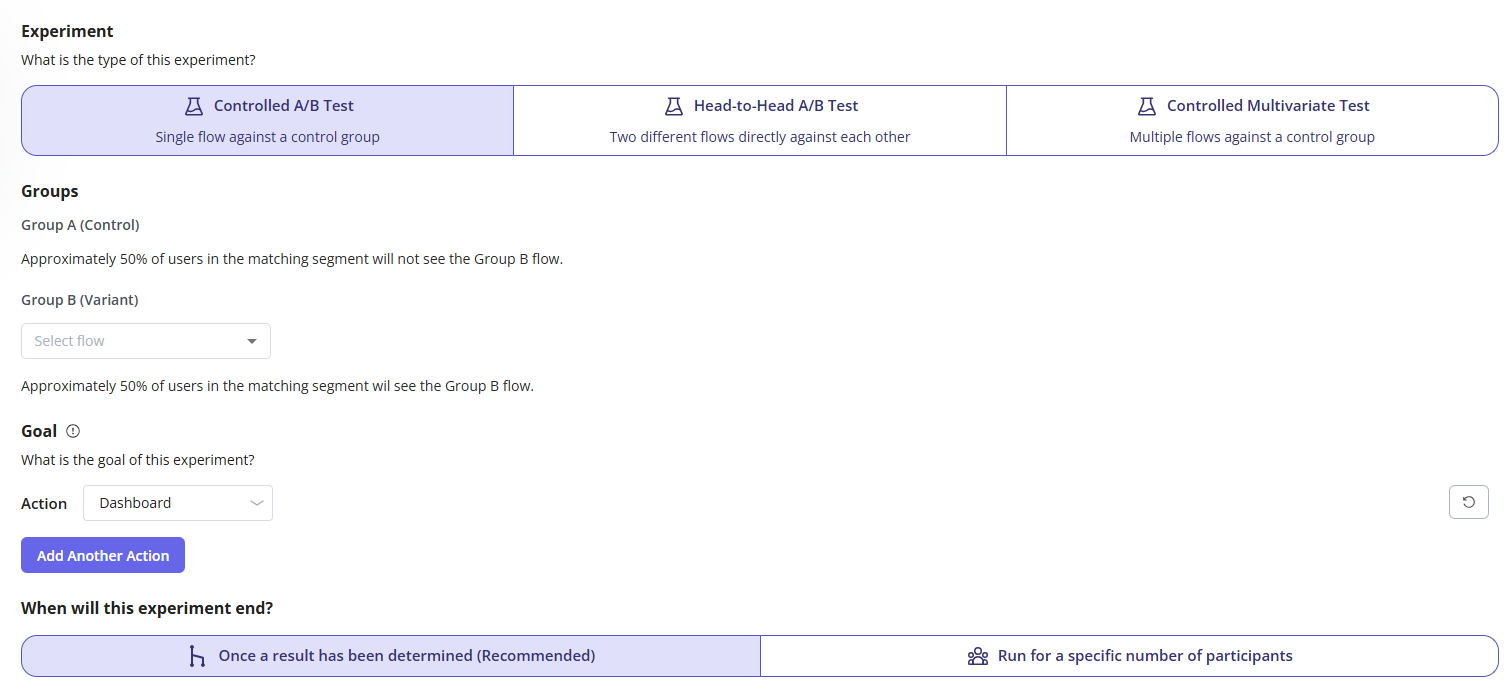This is only available for Growth & Enterprise plans
Overview
Whether you’re a newcomer to Userpilot or an experienced user, you are most likely interested in understanding how to effectively assess goal conversions or measure the impact of certain modifications on your Userpilot flows. Userpilot has made this possible by introducing multiple convenient methods for testing flows against control groups (no flow) and other flows. Our experimentation tools empower your team to make well-informed choices and achieve greater precision when assessing the influence of flows on your growth objectives.
Use Cases
- Assess how well a certain flow is achieving a goal against not showing it
- Compare two flows to decide which onboarding method is better
- Test which flow is better in achieving checkout processes
- Set multiple flows with different settings against controlled groups
Experiment Types
Userpilot provides 3 experiment types, Controlled A/B Test also known as Null hypothesis (Userpilot Flow VS nothing), Head-to-Head A/B Test (Flow VS Another Flow), and Controlled Multivariate Test to test two flows across 3 groups (Null, Group A, Group B).Flows that can be chosen for any experiment type must have the frequency set to Only Once, and cannot be set to trigger Only-Manually.


“Once a result has been determined” will stop when the experiment has lasted for two weeks and there are at least 200 participants. If not, we’ll wait another two weeks or until the total number of participants reaches 200 (whichever comes first).
You can’t change the settings of a flow that has a running experiment.
Experiment Results
Any created test will be seen in the Experiments tab and can be clicked on to see further details. After the experiment has been completed we’ll show a summary of the experiment at the top based on the collected data.Wins.png?fit=max&auto=format&n=0hCXw5eVRU6iqpYB&q=85&s=2e72975fb76f5bf310de6b22d52b2942)
FAQs
What would happen to the status of a flow once the Experiment has ended?
What would happen to the status of a flow once the Experiment has ended?
The related flow/s status will be set to Draft once the Experiment has ended.
Are flows included in Experimentation prioritized?
Are flows included in Experimentation prioritized?
No, they would still follow the Ordering & Throttling added